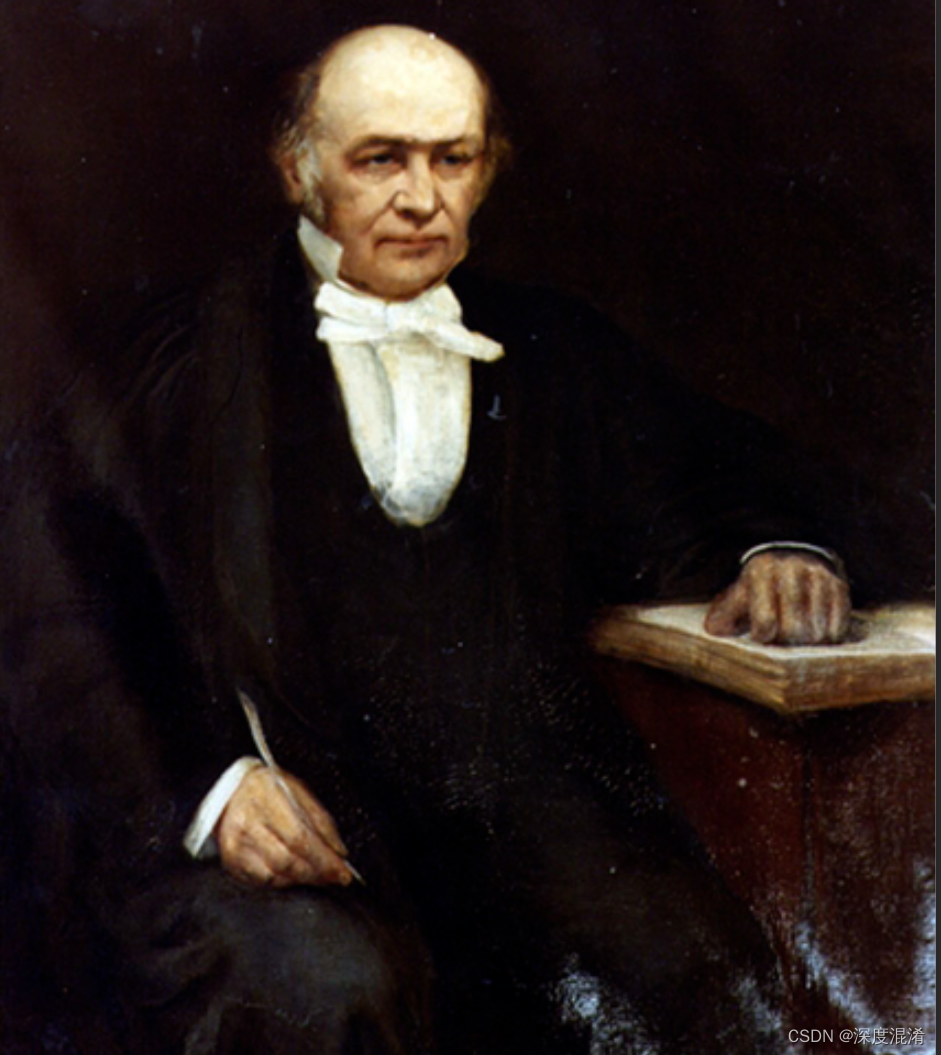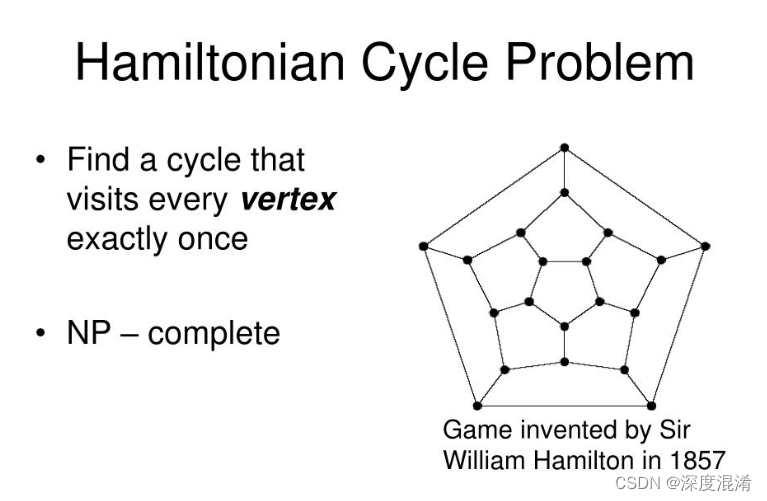C#,图论与图算法,哈密顿环问题(Hamiltonian Cycle problem)的算法与源程序


哈密顿圈问题
无向图中的哈密顿路径是一条恰好访问每个顶点一次的路径。哈密顿循环(或哈密顿回路)是一条哈密顿路径,从哈密顿路径的最后一个顶点到第一个顶点有一条边(在图中)。确定给定的图是否包含哈密顿圈。如果包含,则打印路径。以下是所需功能的输入和输出。
输入:
二维数组图[V][V],其中V是图中的顶点数,图[V][V]是图的邻接矩阵表示。如果从i到j有一条直边,则值图[i][j]为1,否则图[i][j]为0。
在无向图中,哈密顿路径是一条恰好访问每个顶点一次的路径,哈密顿圈或回路是一条哈密顿路径,即从最后一个顶点到第一个顶点有一条边。
在这个问题中,我们将尝试确定一个图是否包含哈密顿圈。当存在哈密顿循环时,也打印该循环。

算法思路
给定一个图G=(V,E),我们必须使用回溯方法找到哈密顿回路。我们从任意顶点开始搜索,比如“a”。该顶点“a”成为隐式树的根。部分解的第一个元素是要构造的哈密顿循环的第一个中间顶点。按字母顺序选择下一个相邻顶点。如果在任何阶段,任何任意顶点与顶点“a”以外的任何顶点进行循环,则我们称达到了死端。在这种情况下,我们回溯一步,然后再次开始搜索,选择另一个顶点并从部分回溯元素;必须移除溶液。如果得到一个哈密顿循环,则使用回溯的搜索是成功的。
From backtracking, the vertex adjacent to 'e' is b, c, d, and f from which vertex 'f' has already been checked, and b, c, d have already visited. So, again we backtrack one step. Now, the vertex adjacent to d are e, f from which e has already been checked, and adjacent of 'f' are d and e. If 'e' vertex, revisited them we get a dead state. So again we backtrack one step.
Now, adjacent to c is 'e' and adjacent to 'e' is 'f' and adjacent to 'f' is 'd' and adjacent to 'd' is 'a.' Here, we get the Hamiltonian Cycle as all the vertex other than the start vertex 'a' is visited only once. (a - b - c - e - f -d - a).

参考:
C#,图(Graph)的数据结构设计与源代码![]() https://blog.csdn.net/beijinghorn/article/details/125133711
https://blog.csdn.net/beijinghorn/article/details/125133711
源代码(POWER BY TRUFFER):
using System;
using System.Text;
using System.Collections;
using System.Collections.Generic;
namespace Legalsoft.Truffer.Algorithm
{
public partial class Graph
{
private bool IsSafe(int v, int[] path, int pos)
{
if (Matrix[path[pos - 1], v] == 0)
{
return false;
}
for (int i = 0; i < pos; i++)
{
if (path[i] == v)
{
return false;
}
}
return true;
}
private bool Hamiltonian_Cycle_Utility(ref int[] path, int pos)
{
if (pos == Node_Number)
{
if (Matrix[path[pos - 1], path[0]] == 1)
{
return true;
}
else
{
return false;
}
}
for (int v = 1; v < Node_Number; v++)
{
if (IsSafe(v, path, pos))
{
path[pos] = v;
if (Hamiltonian_Cycle_Utility(ref path, pos + 1) == true)
{
return true;
}
path[pos] = -1;
}
}
return false;
}
public bool Hamiltonian_Cycle(out int[] path)
{
path = new int[Node_Number];
for (int i = 0; i < Node_Number; i++)
{
path[i] = -1;
}
path[0] = 0;
if (Hamiltonian_Cycle_Utility(ref path, 1) == false)
{
return false;
}
return true;
}
}
public static partial class GraphDrives
{
private static string PrintPath(int[] path)
{
StringBuilder sb = new StringBuilder();
sb.AppendLine("Solution Exists: Following is one Hamiltonian Cycle<br>");
for (int i = 0; i < path.Length; i++)
{
sb.Append(path[i] + " -> ");
}
sb.Append(path[0] + " ");
return sb.ToString();
}
public static string HamiltonianCycle()
{
StringBuilder sb = new StringBuilder();
int[,] graph1 = {
{ 0, 1, 0, 1, 0 },
{ 1, 0, 1, 1, 1 },
{ 0, 1, 0, 0, 1 },
{ 1, 1, 0, 0, 1 },
{ 0, 1, 1, 1, 0 }
};
Graph g1 = new Graph(graph1);
if (g1.Hamiltonian_Cycle(out int[] path1))
{
sb.AppendLine(PrintPath(path1));
}
else
{
sb.AppendLine("Solution does not exist");
}
int[,] graph2 = {
{ 0, 1, 0, 1, 0 },
{ 1, 0, 1, 1, 1 },
{ 0, 1, 0, 0, 1 },
{ 1, 1, 0, 0, 0 },
{ 0, 1, 1, 0, 0 }
};
Graph g2 = new Graph(graph2);
if (g2.Hamiltonian_Cycle(out int[] path2))
{
sb.AppendLine(PrintPath(path2));
}
else
{
sb.AppendLine("Solution does not exist");
}
return sb.ToString();
}
}
}
相关文章
- C# 封装miniblink 使用HTML/CSS/JS来构建.Net 应用程序界面和简易浏览器
- 史上最全的CSS hack方式一览 jQuery 图片轮播的代码分离 JQuery中的动画 C#中Trim()、TrimStart()、TrimEnd()的用法 marquee 标签的使用详情 js鼠标事件 js添加遮罩层 页面上通过地址栏传值时出现乱码的两种解决方法 ref和out的区别在c#中 总结
- C#字符串数组排序 C#排序算法大全 C#字符串比较方法 一个.NET通用JSON解析/构建类的实现(c#) C#处理Json文件 asp.net使用Jquery+iframe传值问题
- 使用C#或javascript将Table里的数据导出到Excel
- 【C#】 =>符号
- C#【中级篇】 C# 正则表达式
- C#,图像二值化(21)——局部阈值的韦尔纳算法(Wellner Thresholding)及源代码
- C#,图像二值化(13)——全局阈值的双峰平均值算法(Bimodal Thresholding)与源程序
- C#,图像二值化(06)——全局阈值的大津算法(OTSU Thresholding)及其源代码
- C#,骑士游历问题(Knight‘s Tour Problem)的恩斯多夫(Warnsdorff‘s Algorithm)算法与源代码
- C#,图论与图算法,无向图断开点(Articulation Points)的算法与源代码
- C#,数值计算,矩阵相乘的斯特拉森(Strassen’s Matrix Multiplication)分治算法与源代码
- C#,动态规划问题中基于单词搜索树(Trie Tree)的单词断句分词( Word Breaker)算法与源代码
- C#,布尔表达式括号问题(Boolean Parenthesization Problem)的求解算法与源代码
- C#,计算几何,贝塞耳插值(Bessel‘s interpolation)的算法与源代码
- C#,泰波拿契数(Tribonacci Number)的算法与源代码
- C#,煎饼排序问题(Pancake Sorting Problem)算法与源代码
- C#,回文分割问题(Palindrome Partitioning Problem)算法与源代码
- C#,最小生成树(MST)克鲁斯卡尔(Kruskal)算法的源代码
- C#,背包问题(Knapsack Problem)贪心算法的源代码
- C#,深度优先搜索(DFS)、广度优先搜索(BFS)算法的源代码与数据可视化
- C#,入门教程(03)——Visual Studio 2022编写彩色Hello World与动画效果
- C# 常用算法 迭代
- c# System.Array
- c# 定义和调用索引器
- 简短介绍 C# 6 的新特性 【已翻译100%】
- C# 之 观察者模式实例 -- 订牛奶
- 转:C#与SQl数据的对应关系(tinyint、smallint、int、bigint)
- C#-类和结构(C# 编程指南)
- C#-ConfigurationManager类引用方法

